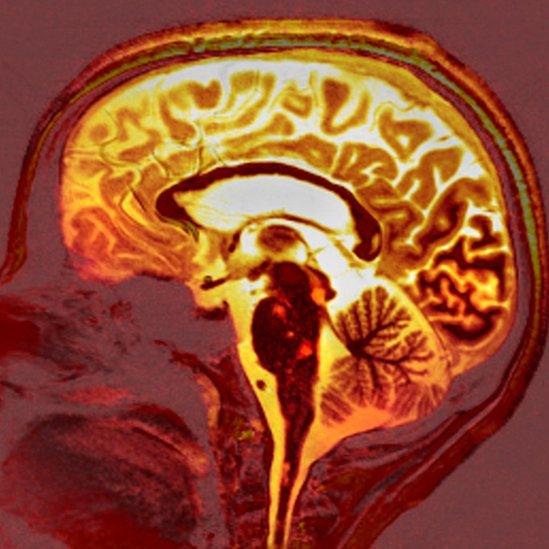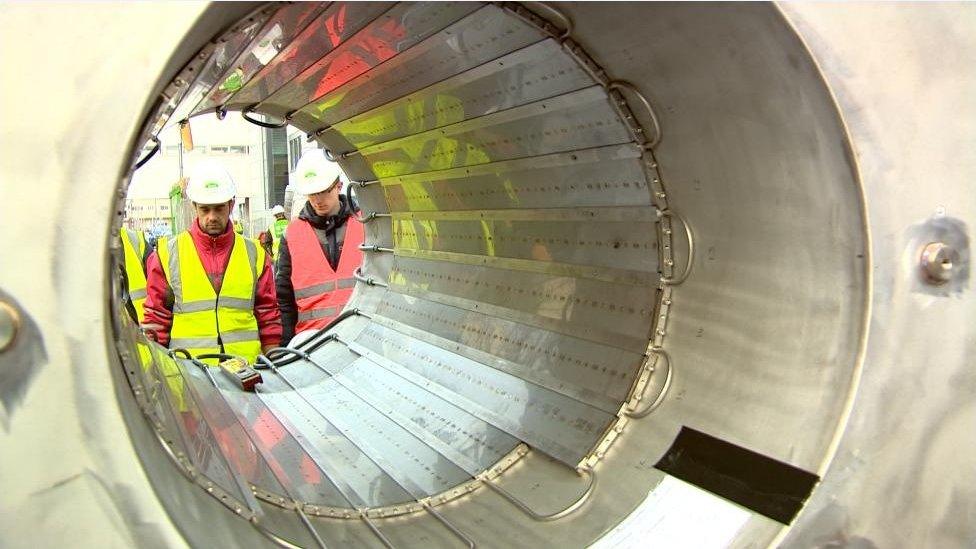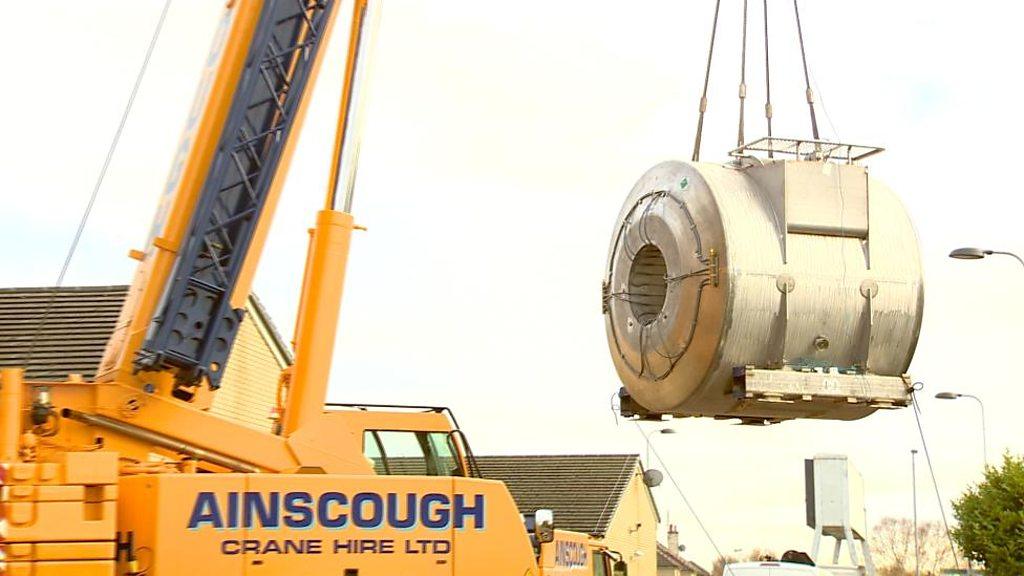Powerful 7 Tesla MRI scanner arrives in Glasgow
- Published
A huge crane was brought in to lift the 18 tonne scanner
Glasgow University has taken delivery of Scotland's most powerful magnetic resonance imaging (MRI) scanner.
The £10m device was lifted into place at the new Imaging Centre of Excellence (ICE) at the city's Queen Elizabeth University Hospital (QEUH).
A giant crane eased the 18-tonne scanner down an alleyway with inches to spare on each side, then through a hole in the wall of the new building.
Once it is installed and calibrated it will be used to research - and help treat - a variety of conditions such as stroke, vascular dementia, Alzheimer's disease and epilepsy.
In its current condition it looks like a space capsule - a huge, upended metal doughnut with a hole where the patient will go.
And like many a space shot it is a thing of superlatives.

The 7 Tesla MRI scanner gives a much more detailed picture of the human body
There is enough wire wrapped around its huge magnets to stretch from London to Brussels.
When it is operating, those magnets - but not the patient - will be cooled to minus 269 Celsius.
That is the temperature of deep space. So this particular corner of Glasgow will become one of the coldest places in the universe.
The unit of strength of a magnetic field is a Tesla (T), named after the Serbian-American pioneer Nikola Tesla.
The magnetic fields of the MRI scanners currently in use in Scotland range from around 1.5T to 3T.
'Centre of excellence'
The new scanner's field strength will be 7T. Or to put it another way, 140,000 times stronger than the magnetic field of planet Earth itself.
The head of Glasgow University's College of Medical, Veterinary and Life Sciences, Prof Dame Anna Dominiczak, sees it as an endorsement of the pioneering work already done there.
"Glasgow is a centre of excellence for chronic disease research and management, and also for clinical trials," she says.
"So as a leader in this area we think we are the best to get a 7 Tesla scanner."

The £10m device will be used at the new Imaging Centre of Excellence at Glasgow's Queen Elizabeth University Hospital
With that field strength will come more detail than existing scanners. Much more. It has been likened to going from an ordinary TV picture to HD.
That added detail will mean far greater opportunities to research and teach - and to treat patients from the QEUH campus with new precision medicine techniques.
MRI scanners may seem new-fangled to many of us. If so, we are just showing our age.
Glaswegians have been getting scanned for more than 30 years now. If we ourselves haven't been scanned, chances are we know someone who has.
But do we know what's going on in there?
Happily the university's professor of clinical imaging, Keith Muir, can explain.
'Clever radio pulses'
"Essentially we're using a very strong magnetic field which is going to line up all the water in your head in one direction," he says.
"And then by applying clever radio pulses it's going to spin them round in various ways that can be detected as very small radio signals which are used through vast computing power to reconstruct a detailed picture of the bit we're imaging."
As with many big ticket science projects, collaboration and co-funding are key.
The university is taking the lead, in partnership with NHS Greater Glasgow & Clyde.
The ICE which now houses the scanner is costing £32m, with money coming from the UK government's Medical Research Council, the European Regional Development Fund, The Sackler Trust and the Dr Mortimer and Theresa Sackler Foundation.
The scanner's proper name is the Siemens Magnetom Terra.
It will take months to set up but once the electrical and civil engineering are over, the science can begin.
- Published27 November 2016
